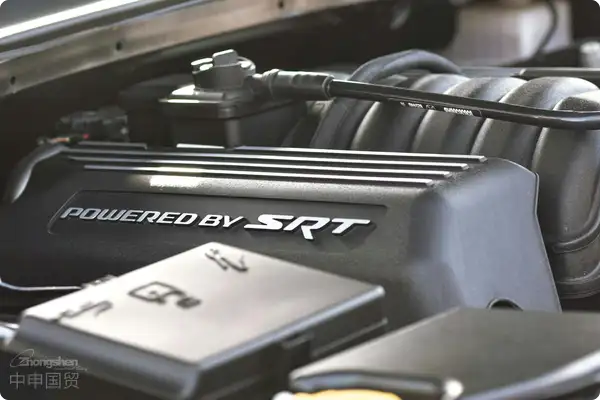- Shanghai Zhongshen International Trade Co., Ltd. - Two decades of trade agency expertise.
- Service Hotline: 139 1787 2118

Professional Interpretation: Automotive Maintenance PartsImport RepresentationFull Process and Industry Insights
As a senior consultant who has been deeply engaged inforeign tradeservice expert with 20 years of industry experience, this article will systematically analyze the core points of clothingExport RepresentationWith 20 years of experience in the field, the author has witnessed the complete cycle of Chinas automotive aftermarket from its infancy to explosive growth. In recent years, as the domestic car ownership has exceeded 320 million vehicles andNew energythe automotive penetration rate continues to rise, the demand for automotive maintenance parts imports has shown a structural growth trend. This article will analyze the core points of automotive maintenance parts import agency from a professional perspective, providing practical guidance for industry participants.
Contents
ToggleIndustry Status and Market Opportunities
1.Consumption upgrading drives demand transformation
Data from 2023 shows that China's imports of high-end automotive maintenance products increased by 18.7% year-on-year, with significant growth in niche categories such as German precision filters, Japanese specialty lubricants, and U.S.-made maintenance agents specifically for new energy vehicles. Consumers' pursuit of "OEM standards" and "vehicle-specific" products has driven the trend toward more refined and customized imported auto parts.
2.Policy regulations accelerate industry consolidation
The latest Import Auto Parts Classification Guidelines implemented by the General Administration of Customs impose stricter HS code declaration requirements for maintenance products. Special attention should be paid to the Motor Vehicle Emission Pollution Recall Management Regulations implemented since 2022, which require importers to provide EPA or ECE certification documents for maintenance products related to exhaust treatment (such as three-way catalytic cleaners).
II. Comprehensive Analysis of Import Agency Process
(Taking German-imported engine maintenance kits as an example)
1.Qualification pre-review stage
- Import enterprises need to obtain the Automatic Import License in advance (for products related to OBD systems)
- Confirm whether the product belongs to3CCertification catalog (special attention required for in-vehicle electronic maintenance equipment)
- EU REACH regulation compliance documents (SVHC substance content must be below 0.1%)
2.Key points for supply chain optimization
- Supplier audit: Focus on verifying TüV certification and ISO/TS 16949 system documents
- Packaging specifications: Hazardous chemicals (such as brake fluid) must comply with IMDG CODEMaritime TransportationPackaging Standards
- Logistics solution:It is recommended to adopt the "Hamburg Port transit +China-Europe Railway Express"Mode reduces transportation costs by 30%."
3.Key points of customs clearance practice
- Accurately declare lubricant base oil components (mineral oil/synthetic oil tax rate difference up to 5%)
- Specialized components for new energy vehicles (such as battery coolants) can apply for tax incentives under the Catalogue of Encouraged Imported Technologies and Products,
- Cross-border E-commerceThe model should pay attention to the restrictions of the "positive list" (single parcel value ≤ RMB 5,000).
Risk Prevention and Control System Construction
1.Quality risks
It is recommended to adopt the "Four-Step Pre-Arrival Inspection Method":
① Verify DIN/SAE/JASO standard parameters
② Sample test kinematic viscosity index (100℃)
③ Verify anti-counterfeiting traceability labels (RFID/NFC technology)
④ Laboratory testing of key indicators such as flash point and pour point
2.Record - filing of Foreign Trade Operators
- US-made fluorinated refrigerants require verification of import quotas under the Montreal Protocol,
- Note for products imported from South KoreaIt is recommended to verify through the following methods:Combined use of FORM K and RCEP tax rates
3.Supply Chain Risks
Establish a "dual-source supplier" mechanism, such as simultaneously developing dual channels with Germany's Mann+Hummel and Japan's Denso, to effectively mitigate the risk of supply disruptions caused by geopolitical factors.
Industry Benchmark Cases
Case 1: A leading chain auto repair company
Through our designed "Bonded Warehouse VMI Model," we achieve nationwide warehousing and distribution of Bosch maintenance products within 48 hours:
- Tariff rate reduced from 14% to 6.5% (enjoying ECFA preferential tariff rates)
- Inventory turnover rate increased to 11 times/year
Case 2: New energy vehicle startup company
For special coolant import requirements:
- Completed GHS label filing with the Chinese Research Academy of Environmental Sciences
- Obtained the Hazardous Chemicals Business License,
- Established a multilingual MSDS emergency response mechanism
Future Trend Outlook
1.Technology Integration: The application of IoT technology drives the development of "intelligent maintenance packages," and products such as filters containing chips require prior SRRC radio type approval.
2.Green barriers: The Euro 7 standard to be implemented by the EU in 2024 imposes stricter requirements on VOC content in cleaning agents.
3.Channel transformation: It is recommended to adopt the new business model of "overseas warehouses + live-streaming e-commerce," leveraging the bonded 1210 model to achieve a "what you see is what you get" consumer experience.
Conclusion
The import agency of automotive maintenance parts has evolved from simple trade activities to systematic projects covering technical compliance, supply chain finance, and data services. The value of professional agency service providers lies not only in customs clearance efficiency but also in helping enterprises build risk prevention systems, seize policy dividend windows, and achieve full-chain value enhancement. When selecting partners, enterprises should focus on evaluating their industry database construction level, the professionalism of customs technical teams, and practical crisis handling experience.
Extended services
To obtain the 2024 Global Automotive Maintenance Product Access White Paper or customize an import plan, please contact the author team via LinkedIn Professional.
Data sources for this article: China General Administration of Customs, ACEA European Automobile Manufacturers Association, F6 Automotive Technology Annual Report
Related Recommendations
? 2025. All Rights Reserved. Shanghai ICP No. 2023007705-2  PSB Record: Shanghai No.31011502009912
PSB Record: Shanghai No.31011502009912









